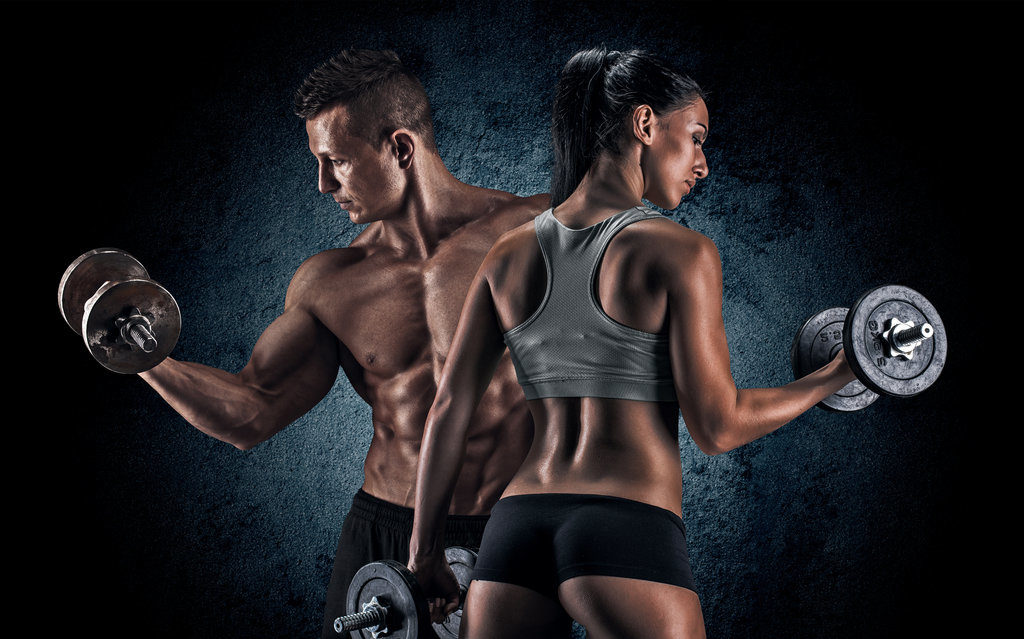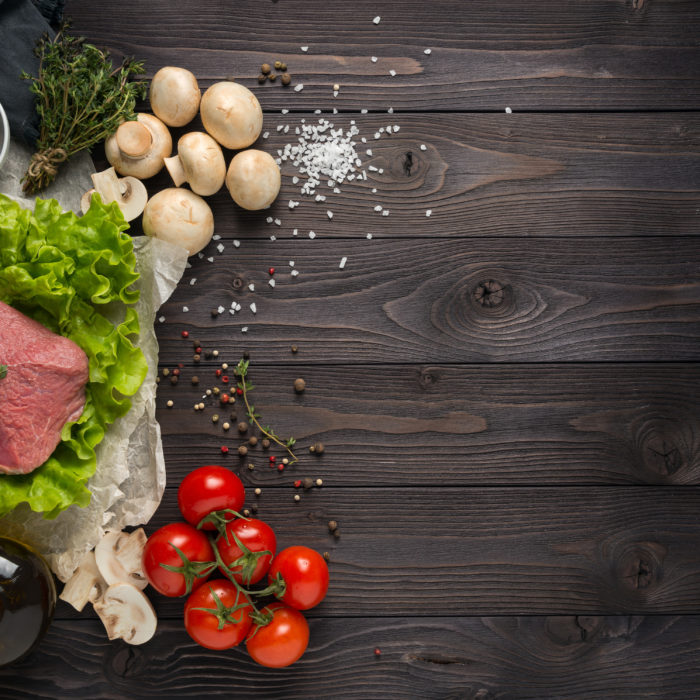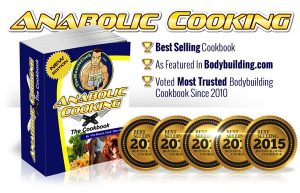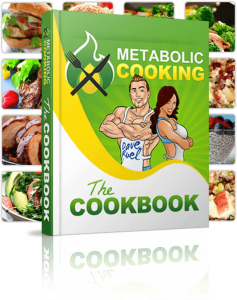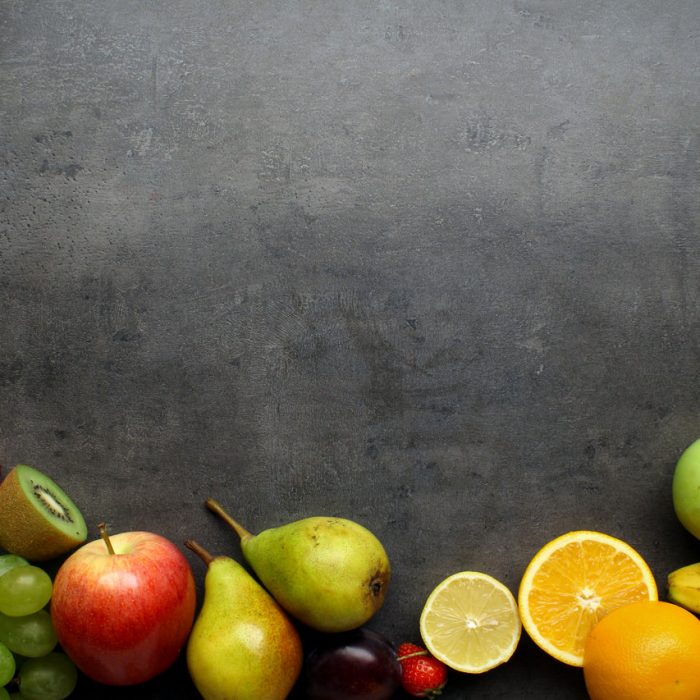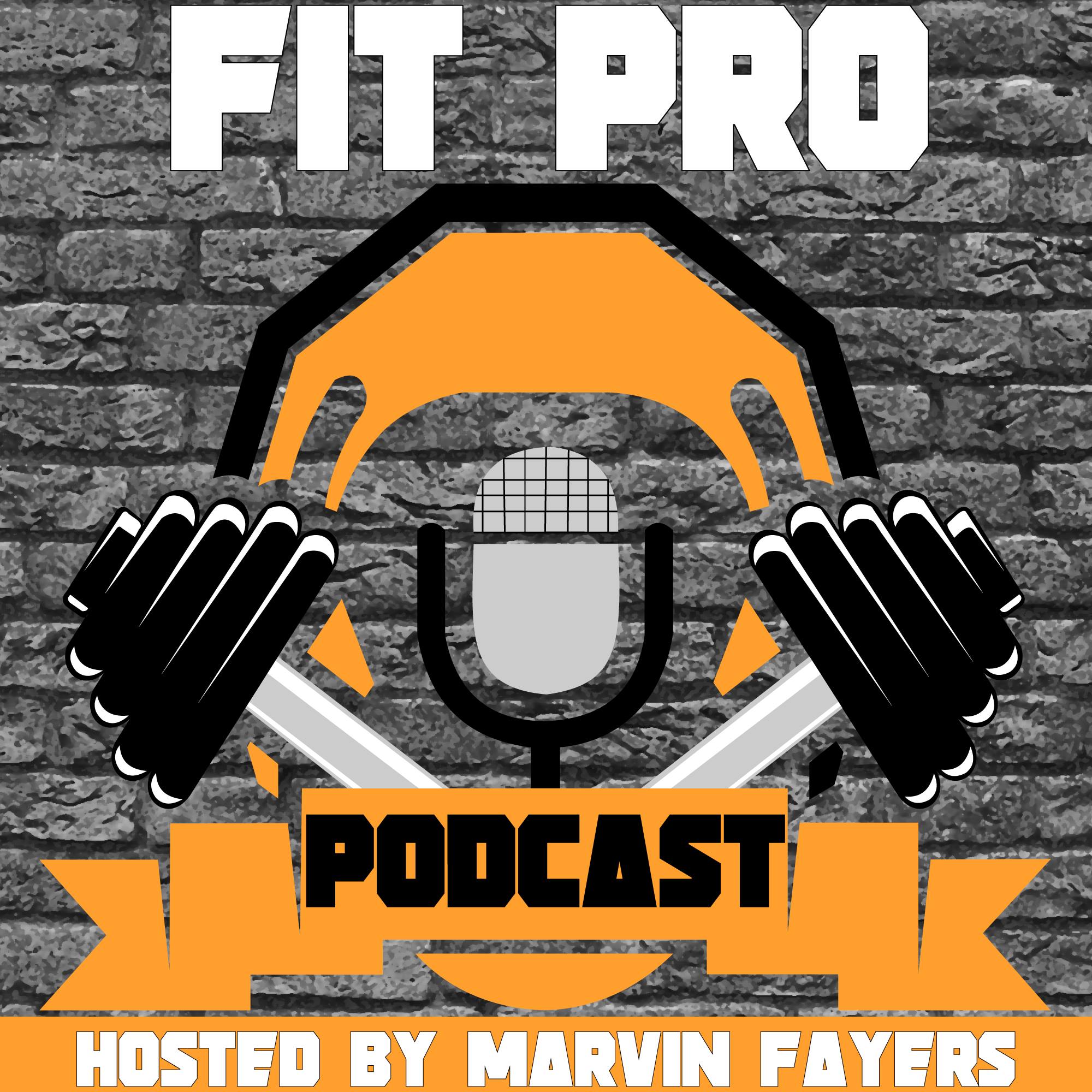Articles
FIRST TIME HERE?
READ THIS ARTICLES FIRST
Research from the University of Georgia has shown that physical fitness and financial success are directly correlated with one another.
Regardless of this state, our world is more obese than ever. Why? Because fitness is one of the last remaining areas you can’t slide by with a half-assed effort.
It’s this one, simple fact, that makes fitness absolutely amazing.
In today’s hand out world, where everyone gets a ribbon for showing up, the art of earning success has been lost. Today we expect success, without doing any work.
Unfortunately that’s not reality.
Sure, in some cases you can steal, lie and cheat your way to success – that I can’t argue. However fitness isn’t one of those areas. You either put in the work or get put in your place. There’s a reason it’s called “working out”
You have to spend the hours sweating, training and earning your body. That’s what makes fitness amazing. It’s the antidote to our obese and success-entitled society. It’s a tribute to our most primal character trait: Work ethic.
It’s also a reminder that if you can change your body, you can change your life. Greg Plitt puts it best: “Second by second you lose the opportunity to become the person you want to be. Take charge of your life.”
It only takes a few hours a week of training and following basic nutrition guidelines to get there. Block out some time and make fitness a priority. You don’t want to be the richest man in the graveyard.
It’s a debate that’s raged since the first weight was lifted and (probably) won’t ever end until a meteor instantly wipes us from history.
It’s also a question I have been asked by almost every single client I have ever worked with.
And in today’s world where people are drowning in fitness information, but starving for results, the truth is often difficult to unmask. The question?
Should you train fasted or fed?
The answer I always give?
“It depends”
It depends on your goals. It depends on your training history and current diet. But most importantly, it depends on you, your life, and ultimately whats works for you; because training fasted (or fed) is just another tool in your arsenal. It’s not your entire arsenal.
Success comes from consistency. Not whether you have food in your stomach while doing drop sets in short shorts. That being said, its important to know whether this unique tool, is right for you.
Personally, I train fasted 85% of the time. I really do enjoy it and it works with my life.
Also my mom trained fasted while I was on the womb (then downed cheese biscuits post workout, obviously explaining my never ending quest for the perfect pizza) which makes me subconsciously feel like I have an obligation to follow in her footsteps.
That being said, many of my clients, friends and coaches, do not train fasted. They throw back a mammoth sized meal, then hit the gym hard. And they swear by its efficacy.
So with both sides religiously believing (and proving) they are correct, who are we to follow? Furthermore, which style is right for you, your life and your goals? In this article, the fasted vs fed training war comes to an end. But first, let’s start with the basics.
The magical properties of insulin
Let’s first get clear what fasted training is. Obviously it’s training (with weights, cardio etc.) in a “fasted” state. A fasted state then, is when your insulin levels are low or at baseline, making fat the primary source of energy for your activities.
When we eat food, our bodies release insulin to manage the incoming nutrients into your blood stream. The bigger the meal, the bigger the insulin response and the longer it takes to return to baseline (fasted) levels.
Thus, the ideal fasted training time is in the morning before breakfast (since your last meal was usually 7+ hours ago). Yes, I am aware that waking up and getting to the gym can be a real pain in the ass for some. It’s usually dark, cold and you are leaving the safe warm wonderland known as your bed to play with pieces of cold steel.
So why even consider fasted training then?
Because it “accelerates” fat loss; primarily stubborn fat. Yes stubborn fat is a real thing.
In males it’s usually the lower belly and in girls it’s found the hips and thighs. The reason it’s stubborn is because those body parts receive less blood flow. This makes it less likely your body will pull from those fat stores to burn up as energy (they would rather pull from fat stores that have a lot of blood flow such as your arms, neck or upper body.)
Thankfully fasted training provides a unique hormonal response that combats that inconvenience.
But before we jump into that let’s make one thing clear: fasted training does not allow you to cheat the laws of thermodynamics. If you’re not a calorie deficit, no amount of fasted training is going to help you get leaner.
Melt fat like butter in a microwave
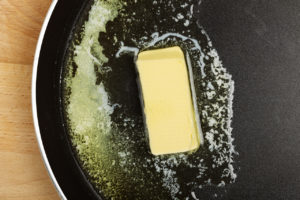
Research shows that exercising with your insulin levels at baseline levels, burns more fat than exercising when insulin levels are higher (1). This is because insulin blunts the breakdown of fat cells for energy (lipolysis) and fat oxidation (fat burning).
Furthermore when you train in a fasted state, your body releases catecholamines (adrenaline) which help you melt stubborn fat like butter in a microwave, give you energy and protect against muscle wasting.
Another great benefit is that in a fasted state, blood flow to the abdominal region ( and the hip/thigh area in females) is increased (ever get cold fingers or toes in the morning before breakfast? All that blood is pooling into core of your body.) The additional catecholamines in the blood stream (as a result of fasted training) combined with the blood flow, help burn that stubborn body fat.
It’s time to get sensitive
Something that’s not often mentioned is insulin sensitivity. Basically, it tells us how efficiently your body uses insulin to deposit a set amount glucose. If you are insulin sensitive, your body requires little insulin to partition the nutrients.
If you are insulin resistant, you need lots of insulin to shuttle the same amount of glucose out of your bloodstream. The more resistant you become, the more likely you are to develop type II diabetes (yikes!).
Fasted training is superior to its counterpart, fed training, in making you more sensitive to an insulin response. This helps you manage your food intake better and making sure that food is used to build muscle, not fat (unfortunately, no studies prove it makes you more sensitive emotionally… yet.)
Furthermore, fasted training has been shown to enhance a variety of biomarkers including GLUT4, VO2 max and general body composition (2)(3).
Accelerated muscle breakdown
So even though I swear by fasted training and it seems that it is the clear cut winner right now, I cannot ignore the significant drawback that makes this training style a double edged sword. Fasted training accelerates the breakdown of muscle tissue and results in some strength loss initially (until you are adapted).
Not a phrase anyone trying to build bodacious bulging biceps, wants to hear.
Obviously accelerated muscle breakdown is a big no-no, because we go to the gym to build muscle, get healthy and look good naked. Less muscle is certainly not what we want after all our hard work. More muscle loss means poorer results and underachievement. Here fed training it the clear winner since it provides the nutrients to protect muscle from excessive catabolism during workouts.
However, if you insist on training fasted (as I do) preventing muscle excessive catabolism is simple. All it takes is proper supplementation.
You can use a BCAA drink before and during your fasted workout to reduce muscle breakdown (10-20g), however I prefer β-Hydroxy β-Methylbutyrate (HMB). This is because it is an extremely potent anti-catabolic agent (more so than its parent leucine, found in BCAA’s.) Furthermore HMB has no effect on insulin whatsoever (keeping you in a fasted state when ingested, and is very cheap! 2-3g is all that’s required if you go this route.
Wavering mental focus
One more thing to note is that if you are not used to fasted training, you will be noticeably weaker in the beginning. Don’t worry, your muscles aren’t falling off your bones.
The culprit here is your carbohydrate stores. In a fasted state, you have less carbohydrate stores available, since your body has been using it for energy while you weren’t eating. However your body is extremely intelligent. Over time, usually a few weeks, your body will adapt, preserving glycogen stores overnight so you have more available when you hit the gym fasted. Your strength will return and life will be back to awesome!
That being said, no matter how adapted I am, I have always found that I am my absolute strongest when I have food in my belly. There simply is no substitute for it.
Your turn!
Your body is an amazing machine. If you think you can’t handle deadlifting, squatting and bicep curls, while standing with 1 leg on a Bosu ball, you are selling yourself short.
My goal with this article was to give you some clarity and hopefully end the debate on the age old question, should I train fasted or fed. If you are feeling a little drained trying to get yourself to train fasted, here are some action steps you can take to make this part of your day your hour of power:
- Drink more than water! As long as it has zero or very few (10-20 cals) it probably won’t knock you out of your fast. Some of my favourites are green tea, black coffee, caffeine pills, certain pre workout powders and the supplement Forge by legion athletics. Other option include sugar free gum, diet pop and BCAA drinks (sugar free) and Athletic greens!
- Try and eat post workout. You are already in an accelerated catabolic state from the fasted training. Your body is primed to receive nutrients and food! Use is to your advantage. Just don’t use it as an excuse to have an all you can eat fiesta.
- Try working out first thing in the morning. If that doesn’t work, try eating a small meal, then training a few hours later.
- If you cannot make it fit your schedule, you absolutely hate it, or have a tough time putting on weight, just don’t do it. While helpful, it isn’t necessary to achieve your fitness goals. Just don’t be afraid to at least give it a shot!
Remember, your body is much more adaptive than you think and you have much more freedom than many gurus claim. Muscle won’t fall off if you train fasted and you certainly wont become the Hulk if you choke down 2 bananas and some eggs before the gym. Remember, the early bird doesn’t necessarily have to eat the worm right away.
America’s obsession with muscle is, unique.
On the one hand, we worship miniature hulks, posing on stage in what can only be described as denatured thongs. On the other hand, we idolize superhero actors, revealing striations anatomists didn’t even know existed.
One could say we are conflicted. Regardless, one thing that holds true is that we want more muscle. We want to be bigger, faster, stronger than the competition – and rightfully so. Adding muscle to your frame has a variety of benefits including but not limited too: increased metabolism, better quality of life and more lingering stares from strangers as you walk down the street. On that note, here are 3 muscle building lies you need to stop falling for, to start building gargantuan amounts of head turning muscle.
Lie #1 You Must Go Balls To The Wall… AKA Train
Hard Or Go Home.
Look, I have a feeling, if you’ve read this far you want one thing: To look like a greek god and perform like an athlete. You don’t want to look like a fat powerlifter or a meathead bodybuilder. So let’s learn from the athletes of the world instead of the drug pumped, rage filled bodybuilders.
However let’s first look at this study fro the journal of applied physiology: In 2006 scientists tried to once and for all prove that failure training is not superior to non-failure training. They recruited 42 competitive athletes which were divided into three groups:
One group that trained to failure, one group that trained to non-failure, and one control group – and began the 16 week training program. Here’s what the researchers said:
“In conclusion, both training to failure and training not to failure resulted in similar gains in 1-RM strength, muscle power output of the arm and leg extensor muscles, and maximum number of repetitions performed during the parallel squat.”
In non geek speak, the non-failure group significantly increased muscle power during the final phase of training while the training to failure group did not. This is why the athletes and olympians have gravitated toward this type of training.
Another benefit from “success style” lifting you can sidestep any severe muscle breakdown and work each muscle group more frequently. With quicker recovery time and more frequency, each muscle group can be trained more often. This gives you more “practice” with any given lift.
This practice increases the neurological impulses to a muscle. Over time, your nervous system becomes more efficient at delivering high voltage to the muscle.
The more “practice” you get with a lift, the stronger you will become. The stronger you become, the more muscle your body can build. The more muscle you build, the more badass your body becomes.
Lie #2 Lift lighter weights for more reps
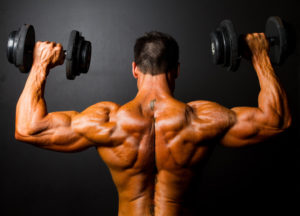
The next time you hear someone say “lift lighter weights for 12-15 reps for muscle growth and to get ripped”…run the other way.
You need to understand this simple fact: Bigger tasks recruit the biggest muscles. However it still uses the smaller ones. Your body will almost always recruit motor units in the same order, from small to medium to large.
Thus, when you’re doing the most demanding movements—such as a near maximum deadlift or a incline bench press—you don’t just recruit the biggest motor units. You use all of them.
As you can see, Thus, heavy lifting is a unique muscle builder: It hits the smallest as well as the largest. You get more bang for your buck and are able to build strength, muscle and a head turning, superhero body that much faster.
Lie #3 You need to eat gargantuan amounts of protein to build muscle and stay lean.
The bodybuilding world has an obsession with protein because amino acids are the building blocks of muscle. The belief is the higher the protein intake, the better the rate of muscle growth.
However, eating protein doesn’t stimulate muscle growth, proper training does. You can’t build muscle with just good nutrition, you need a stimulus. Proper exercise is that stimulus. Amino acids are just a ticket that allows growth to occur. For example, did you know most men who look fit and ripped suffer from low testosterone? Yup, it’s true. Why? Because they neglect fats and carbs in favour of protein.
Furthermore, a study from 2007 published under the Journal of the American Academy of Dermatology showed that high protein diets actually caused a dip in testosterone levels.
Protein should be consumed at the minimum effective dosage required for muscle support in training. The remainder of the diet should consist of carbs and fat if testosterone optimization is also one of your goals; which it should be. No one wants a badass body with a limp noodle between their legs.
In Sum
The quest for the perfect body is a life long battle. However if one thing for sure is that people in shape have a higher quality of life. DO yourself a favor and hit the gym once in a while. Your body and mind will thank you 10 times over – just remember to avoid these 3 muscle building fallacies so you aren’t wasting your time and effort pumping iron.
How many different foods, in a week, would you say you eat?
5?
25?
40?
If you are like most people you fall into the 40+ category.
And while variety has been coined to be the spice of life, simplicity is the ultimate sophistication.
Wordplay aside, keeping your diet relatively similar on a daily basis as a myriad of health and psychological benefits. Two of the many we’ll discuss are eliminating decision fatigue and the commitment to consistency principle.
So without further or do, let’s jump into one of the most life changing principles I have ever come across for abundant energy, effortless fat loss and greek god like muscle.
Eliminating Decision Fatigue
Decision fatigue helps explain why ordinarily sensible people get outrages at colleagues and families for no apparent reason, splurge on clothes and buy a delicious but completely unnecessary 1 kg bucket of Nutella at the supermarket
No matter how rational and high-minded you try to be, you can’t make decision after decision without paying a biological price.
The more choices you make throughout the day, the harder each one becomes for your brain, and eventually it looks for shortcuts, usually in either of two very different ways.
One shortcut is to become reckless: to act impulsively instead of expending the energy to first think through the consequences. (Sure, eat half a pie. What could go wrong?) The other shortcut is the ultimate energy saver: do nothing. Instead of agonizing over decisions, avoid everything at all costs (yes the problem is that there is actually rep ructions to your actions, even if you action is nothing).
Not doing anything, often creates bigger problems in the long run, but for the moment, it eases the mental strain.
For example, dinner tonight. What are you going to have? If you’ve had a decision filled day, chances are you’ll say fuck it, and order pizza. Your brain gets the much needed break, but your body and goals take a hit.
By having a list of pre determined foods you stick too – it makes deciding what you eat effortless. This leads to more compliance and ultimately the achievement of your fitness goals.
Commitment to consistency
If you are reading this, you are aware of how important starting your day off right is for your overall life success.
And the first thing you put into your body (regardless of the time) plays an even more important role. Ever had a first meal from an all you can eat buffet? Ya, my mouth is salivating too just thinking about it.
That being said, those are probably some of my most unproductive days. After the obscene eating scene, I crash hard. Which makes sense, physiologically speaking.
But then my day usually spirals out of control. I avoid doing work and when I do get around to eating again, I usually opt for unhealthy foods, because hey I already ruined most of the day, might as well just restart tomorrow.
By starting the day off healthy and the same way you set yourself up for success. It becomes a pattern to eat the 2-3 meals and you know that you are guaranteed to feel fucking fantastic after.
Now, you’re probably thinking “won’t I get tired of eating the same meals every day?”
Well I’ve been eating these same meals very regularly for a few years now and I have yet to get bored of them. But that’s because I have a few tricks up my sleeve; tricks that if you ask nicely (say pretty please), I’ll share:
1. I do have the occasional all you can eat cheat meal to spice up my life – mostly for the psychological aspect of giving me a break. Plus, life’s too short to miss out on deep fried cheesecake.
2. I do modify the flavor of my meals by getting different types of cheese, adding different seasonings, spices and even salsa, or changing up the vegetables that I use. You also don’t need to be too strict about it. If you feel like you’re getting tired of the same meal then take a break for a couple of days. 20 foods however should provide more than enough variety for a while
My Top 20 Foods
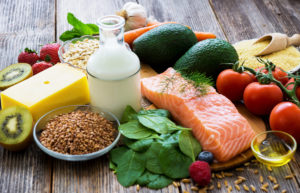
Protein: Boneless/Skinless Chicken Breast; Turkey breast (deli, carved or bacon style); Egg Whites; Lean Burgers; Flank Steak
Carbs: Potatoes (russet, yellow fleshed, white or sweet); White Rice; Banana (Frozen or Not); Strawberries (Frozen or Not); Raspberries (Frozen or Not); Pasta; Bread; Chocolate Almond Milk
Fats: Coconut Oil; Olive Oil; Butter; Chocolate (Dark); Cheese ; Eggs (whole); Coconut Milk (unsweetened)
My 2 Favourite Cookbooks For Delicious Meals
I’m going to be honest here, I used to be an awful cook. But then I was turned on to the Muscle Cook and his great teachings.
Here are the only 2 cookbooks I use and recommend.
Anabolic Cooking – Muscle Building Cookbook
Metabolic Cooking – Fat Loss Cookbook
Your Action Steps
What, you think I would end an article off without giving you homework?
Please, you should know be better than that by now.
Once you start simplifying your diet, you’ll find it’s hard to stop. When eating incredibly healthy day in and day out becomes effortless and you notice how great it makes you feel, you start to realize that simplifying your diet is the easiest way to vibrant health.
So what I want you to do is pick 2-3 foods you absolutely KNOW don’t make you feel like shit when you eat them. For me that was olive oil, chicken breast and sweet potatoes.
Eat only those foods for ONE day.
Then the next day add in another food. Then another. Until you find a food that doesn’t fit.
Keep testing until you find your 15-20 Top foods.
Then, eat them for the rest of eternity. Ok fine… Once a month, you can cheat a little bit. Have some pizza, ice cream or deep fried Oreos. You want to binge eat 322 gummy worms? I understand.
BUT in general, stick to your top 20 foods. It will do wonders for your health and energy.
60 billion dollars.
That’s the value of the diet industry today.
1 in 3. That’s how many American and Canadian adults are overweight or obese today.
1 in 3. That’s home many American and Canadian CHILDREN and TEENS are presently obese or overweight.
So, obviously, we have a problem; yet, as a whole, we still seem to be getting fatter and sicker.
According to the American Medical Association (AMA), this is the first generation where the parents are expected to OUTLIVE their own children. No parent should have to bury their child. Ever.
There is, however, a positive side to all this:
Research into how the human body works has exploded over the past few decades. And the conclusions are nothing short of remarkable. That’s the reason for this report. To spread the message, that you do have control over your body, your weight and your health.
You are a Ferrari, So Start Treating Yourself Like One.
On that note, I’ like to introduce you to the 5 components of the perfect diet.
Now these components are based around 2 principles:Results & Adherence
There’s no reason in following a diet if it doesn’t line up with your goals and give you the results you are after. That’s what these ingredients are for. Furthermore, eating a bland, boring diet means you’ll quit on day one and never get the results you are after. That’s what these ingredients are for.
So, with that long introduction out of the way, let me introduce you too… The 5 pillars of the perfect diet. It will be broken down into 2 main sections (results and adherence) and then further broken down into individual components.
Where Results Comes From…
1. Energy deficit or surplus
This is most important factor to weight loss/gain/maintenance. Eat more calories than you burn and you will gain weight. Eat less calories than you burn and you will lose weight.
And today its easier than ever to manage your calories with hundreds of apps, programs and restaurants proudly showcasing all the necessary data.
So therefore your plan is this: figure out your fitness goal, find out the necessary calories you need to consume each day to reach that goal and hit your calorie goal every single day.
Here are some simple calculations to get you started…
Fat loss Calories = your goal body weight (within 20lbs of your current BW) x 11 or 12
Muscle Gaining Calories = BW x 16
Maintenance Calories = BW x 14-15
Obviously, everybody is different and lead different lives, so play around. Track you calories and body weight for 2 weeks and then re-asess. If you are making great progress, then continue. If not, reassess the numbers and track another 2 weeks.
Remember, it probably took you 20+ years to get to your body now…it’s not going to magically change in just 1-2 months.
2. Macronutrient Ratios
While eating a diet of pizza and pop tarts sounds terrifyingly delicious, your body will suffer gravely. That’s because your body’s hormones are kept carefully in balance by the calories you eat – and the breakdown of those calories.
The only diet, to date, that has been studied, perfected and stood the test of the time is the balanced diet.
Low fat diets destroy testosterone and cause hormonal imbalances.
Low protein diets cause unnecessary muscle loss and poor repair.
Low carb diets cause brain fog, low energy, unpleasant mood swings and hormonal imbalances.
That is a diet that consist of close to even amounts of protein carbs and fats. However sometimes, based on your goals, you need to adjust these. Therefore, I am going to give you my 3 go-to ratio splits for fat loss, muscle gain, and everyday living.
For fat loss diets you want a little extra protein to preserve muscle mass with just about of carbs to support exercise.
Carbs 35-40% Protein 35% Fat 25-30%
Muscle gain should emphasize carbohydrates to promote recovery and support intense training protocols. Fat should kept lower due to the high carb content.
Carbs 45-50% Protein 25-30% Fat 25%
Everyday diets should provide a ratio that gives freedom and satiety while keeping everything in balance.
Carbs 40-45% Protein 25-30% Fat 25-30%
Where Adherence Comes From…
3. Micronutrients, Food Choices and Food Combining
My overarching philosophy is that you CAN get lean eating lots of foods. But I think that being “strict” has merit aside from its efficacy. That is to say, I think restriction can teach you a lot about yourself, and give you some skills that translate to other area of life.
As such, I would prefer that you primarily eat whole, unprocessed organic foods, and keep other stuff to a minimum. Especially for the first month on a diet.
Furthermore, I am a strong believer that for the most part, as long as everything else (training, mindset and supplementation) is going according to plan, most foods work swell together.
4. Meal / Nutrient Timing
This component helps with adherence, because life is hectic. While rigid diets are great, they offer little flexibly for the chaos that is called life.
While eating big meals post workout helps, its not necessary. While skipping breakfast may be easier, it is not necessary.
While eating 6 meals may be more convenient for some, eating 2 big meals (with the same total calorie count as the 6) achieves the same results.
While intermittent fasting may be all the rage, again it is not necessary.
What is necessary, is that you are hit your calories on a day to day basis (preferably with mostly whole foods with a proper macronutrient split). When and where you eat is ultimately up to you and your life. Here’s how I time my meals…
I skip breakfast and opt for black coffee or pre workout and lots of water(I find it gives me more freedom).
I don’t snack.
I eat 2 big meals and 1 smaller meal.
I try to consume my biggest meal post workout and/or near the middle/end of the day.
Sometimes I scrap all these rules if my day doesn’t work out in my favor.
5. Supplements
There’s a reason this is number 5.
You don’t need supplements. That being said, they still offer unique benefits.
First off, they speed up results. If you have your diet and training in check, supplements will speed up the results you are after making adherence much more manageable. There’s nothing worse than going on a diet for 8 months and realizing that with the right fat loss supplements, you could’ve achieved your goal, in only 5 months.
Secondly, they fill the gaps. I’d like to wager that no matter how healthy you eat, there are some micronutrient gaps in your diet, robbing you of precious energy. This is where supplements come in. They are your nutritional insurance policy. They fill the missing micronutrient gaps in your diet so that your body is functioning optimally.
Lastly, they make life easier. Supplements, tend to add freedom to your life. They give you a little cushion, so that if you were to tragically binge eat a dozen, fresh out of the oven Krispy Kreme original glazed donuts, you wouldn’t do the worst possible damage.
Furthermore, maybe you are strapped for food, protein powder provides a quick and satiating meal replacement. Or maybe you need a kick in the ass to get to the gym. Enter pre-workout powders.
The bottom line, get the diet and training in check and then add the supplements.
https://petertzemis.com/wp-content/uploads/2016/11/EP011.mp3 Episode highlights –> Why multiple revenue streams are the only option –> The #1 fastest way to double your profits –> what it REALLY takes to build a successful online fitness business –> How to get comfortable charging…
https://soundcloud.com/menprovement/3-basic-principles-of-diet-and-exercise Episode Highlights –> 3 Steps to building your badass body –> The killer mistakes, robbing you of your dream body –> What to do if you actually get your dream body BUT don’t like it
There is so much confusion when it comes to all the different diets out there! Some tell you that you should avoid carbs completely or at least limit them to a small amounts, and everything in between. I’m…
Yes, this is a post about Pokémon. And you’re going to learn something from it. So last weekend, some of my friends decided it would be a cool idea to buy some rum, vodka and other mind altering…
One of the best things about getting your health in order is that you start looking more appealing to the opposite sex. Your wife or girlfriend takes notice. You might even catch other girls looks start to linger longer.…



